UC People: Anthony Graham
Share This Article
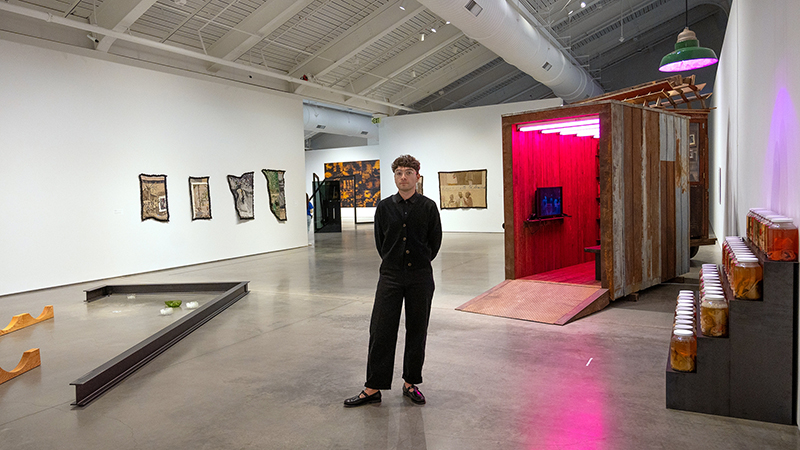
Berkeley News
I’m a Berkeleyan
This I’m A Berkeleyan feature is a first-person narrative by Anthony Graham, senior curator at the Berkeley Art Museum and Pacific Film Archive (BAMPFA).
I’ve spent most of my life living in California. Originally from San Diego, I grew up thinking winter ended in December and have never understood why people enjoy snow. While I’ve been lucky to have had opportunities to travel and live in other places, I always find myself coming back.
Working in museums, I have found the most exciting projects are ones that feel like they’re not just important to do now, but to do here. Feeling connected to the history of a place — or feeling like you’re contributing to a conversation of where you are — is something I think about constantly. I am really committed to California and its histories, and I’ve had the opportunity to spend years thinking about art in Southern California.
Having joined the Berkeley Art Museum and Pacific Film Archive last year as senior curator, I’m really looking forward to getting to know the Bay Area. I feel fortunate that I get to do so through my work at the museum, organizing exhibitions and focusing on our incredible, expansive collection.
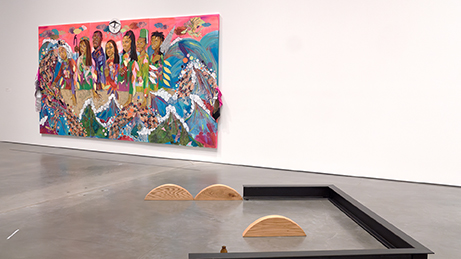
The first art exhibition I remember seeing was titled Classic Contemporary: Lichtenstein, Warhol & Friends. This was during a high school field trip to the Bellagio Gallery of Fine Art located in the Bellagio Resort & Casino.
As a teenager in Las Vegas, it seemed normal enough that this exhibition would be in a casino, since that’s where many malls, movie theaters, and bowling alleys were, too. While I didn’t know of any museums in the city, I knew that these works were all borrowed from the Museum of Contemporary Art San Diego (MCASD), which was where I was born and had lived before moving to Las Vegas with my family. It felt exciting to be connected to these works somehow, that we were both from the same place, far away from the sprawling, suburban desert.
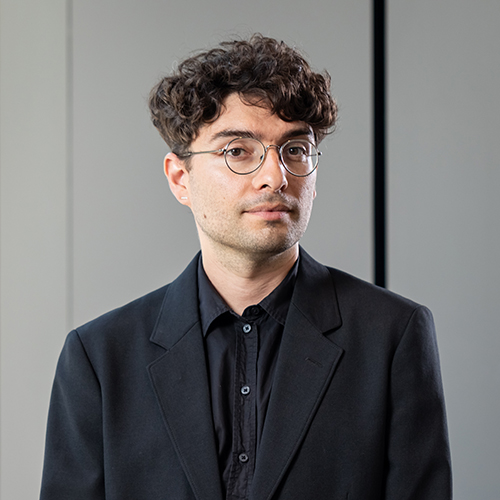
I was so excited about the exhibition that I did our class assignment twice, presenting on two different pieces from the exhibition: Carl Andre’s Magnesium-Zinc Plain (1969) and Ed Ruscha’s Ace (1962). I loved the way that both of these works were nothing like the artworks I saw in textbooks or even on television. These weren’t portraits of royalty or vases of flowers.
Andre’s sculpture was of metal plates you could walk on. Ruscha’s painting was covered with thick layers of black paint, except for the title, which was painted in a bright cobalt blue and at a slanting angle which made the letters seem like they were moving across the canvas. This was the first time I realized that art could connect to things in our everyday lives, that it could even blend into the world around us — whether as a checkered floor or the language painted onto commercial signage. When I told a teacher I wanted to do this, to put together exhibitions like this one, I was told that it wasn’t a job, but could maybe be a hobby or side project.
The following year, I moved back to San Diego for college, where I began studying architecture. That, it seemed, would prepare me for an actual job. But I quickly found myself in museums, visiting MCASD and other museums around the city. As a sophomore, I started working at the front desk and gift shop of the Museum of Photographic Arts. Getting to spend so much time in an art museum, I loved watching how people moved throughout the galleries and how the different artworks seemed to talk to each other in the space. This seemed like a natural way to bridge my architecture major and persistent fascination with art.
While I continued studying architecture in graduate school, my focus shifted more and more towards contemporary art. Living in New York, which itself seemed to be at the center of the histories I was learning, I found myself thinking more and more of California. This came together in my graduate thesis in a project that combined my intersecting interests: how we live and move around cities; how art makes us see public space in new ways; and how the history of art and architecture could be written from California.
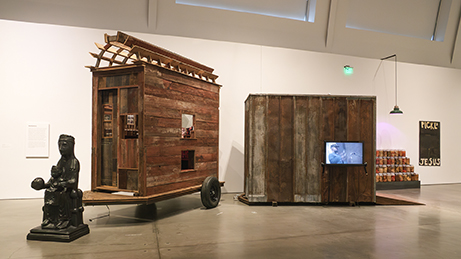
Just as I finished my thesis, MCASD posted a job for an assistant curator. Within a month, I was packing up and moving back to California. While my contract was for just one year, I ended up staying for seven and a half years. Throughout my time there, I got to work on incredible exhibitions focused on artists based in California. One of the first projects was to help with an exhibition of work by Ed Ruscha, anchored by the exact painting I had seen in high school. I then got to work with a number of artists on solo shows, including Nancy Lupo, Sadie Barnette and Griselda Rosas — whose exhibition I was later able to bring to BAMPFA.
One of the biggest shows I worked on was a retrospective of the artist, Alexis Smith. Throughout her five-decade career, Smith was always thinking about the place she was from: Los Angeles. For her, California was as much a symbol as an actual place. Heading West meant setting out in search of the unknown. The silver screens of Hollywood promised that anyone could reinvent themself into a new person. But always, her works held close the fact that this was a real place, full of complex histories and cultures.
Here at BAMPFA, I am so glad to have been able to work on our presentation of A Movement in Every Direction: Legacies of the Great Migration. The exhibition itself has had a migration — it was co-organized by the Mississippi Museum of Art and the Baltimore Museum of Art. After being presented at both of those museums, the show has traveled to Brooklyn, Los Angeles and now Berkeley.
This exhibition features 12 contemporary artists who were all commissioned to make new work reflecting on the Great Migration — when millions of Black Americans left their homes in the South and moved all over the U.S. Many people moved here to California, and in the Bay Area alone, the population of Black Americans increased by 300,000 between 1940 and 1970.
While the show embraces really expansive and imaginative ways of thinking about migration, it remains deeply connected to place. Many of the works in this exhibition are connected to the artists’ own lives and the lives of their families. For some artists, this means thinking about where their families have moved from and the relationships they have, or don’t have, with those places.
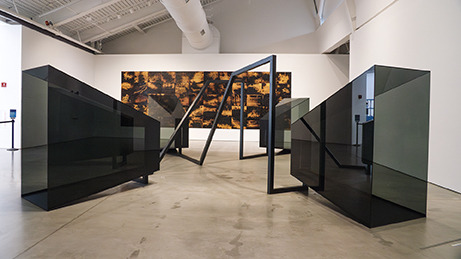
In a trio of sculptures, Leslie Hewitt combines steel beams, curving wood forms and inherited glass bowls and vases into architectural interventions in the space. When moving through the exhibition, the viewer encounters each of the sculptures individually. While you can’t compare their similarities or differences directly, you can perceive the ways that each sculpture is unique. The work challenges us to think about how we imagine spaces in our memories and the ways that our associations with those places shift with our own movement and the passage of time.
For others, this project is an opportunity to think about their deep connection to where they and their families have lived for years. In A House Called Florida, Allison Janae Hamilton explores the ways that Black culture is entwined with the Southern landscape, thinking about the history of the Great Migration not from the perspective of movement, but of understanding what it means to remain in a place. Taking inspiration from Julio Cortázar’s short story Casa Tomada (A House Taken Over), Hamilton’s video installation considers how culture and the environment both persist and adapt to a constantly changing — and degrading — climate.
The show is an opportunity for all of us to think about how the Great Migration has influenced our lives — whether through the experiences of our own families or how this history has shaped the places we live. For me, it’s a perfect example of how art and artists help us think about our history from a new perspective, tracing all of the ways that our lives are impacted by the people and places we’re a part of.
